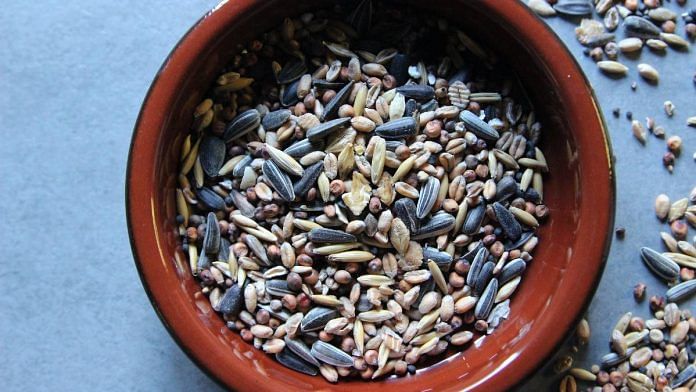New Delhi: Consuming 50-200 grams of millets daily for an extended period of time could help reduce the risk of cardiovascular threats by combating cholesterol and triacylglycerol levels as well as moderating one’s body mass index (BMI), a new study has found.
The study, undertaken by five organisations and led by the International Crops Research Institute for the Semi-Arid Tropics (ICRISAT), was based on millet consumption observed for durations ranging between 21 days and 4 months.
The findings, published in Frontiers in Nutrition in July, pointed out that besides being highly nutritious, millets have a low carbon footprint with the ability to survive in high temperatures and minimal water. Millets are also known to have a low glycaemic index, which helps manage diabetes.
ICRISAT released a summarised assessment of the study last week.
Also read: Millet dosa or Millet biryani? Read the fine print on the food fad of the future
Impact on cholesterol, blood pressure
According to the study, consuming millets decreases the body’s cholesterol level by 8 per cent, and low and very low-density lipoprotein cholesterol (also known as bad cholesterol) and triacylglycerol levels in blood by 10 per cent.
Analyses of data from 19 studies, with nearly 900 subjects in total, also found that consuming millets reduced the diastolic blood pressure (the lower number) by 5 per cent. There was also evidence to suggest that millets could reduce BMI by 7 per cent in overweight and obese people, possibly resulting in a normal BMI.
It also pointed out that millets have a much higher concentration of unsaturated fatty acids — 2-10 times higher than refined wheat, milled rice and whole grain wheat. This makes millets the healthiest alternative foodgrain when compared with the widely consumed rice and wheat.
The study also identified various priority future research areas, including studying all the different types of millets, understanding variety-wise differences as well as different types of cooking and processing of millets and their impact on cardiovascular health.
“Unhealthy diet is a major contributor to rising cardiovascular and diabetes cases. The results of this study showed that the consumption of millets reduced risk of developing type-2 diabetes and helped manage it. This highlights the critical need to appropriately bring millets back into diets of the majority of Indians,” said Dr Hemalatha, director, National Institute of Nutrition.
Also read: Maida gets a dirty label but has the same level of protein as dal
Wider, detailed studies required on millet benefits
The study recommended a more detailed analysis of how millet consumption impacts weight management and hyperlipidemia (high levels of lipids or fats). Further, it also advocated bringing millets back as a staple diet to combat growing cases of obesity and overweight in children, adolescents and adults.
“A key recommendation from the study is for the government and industry to support efforts to diversify staples with millets, especially across Asia and Africa. Given that millets are hardy and climate smart, returning to this traditional staple makes a lot of sense and is a critical solution that could be the turning point of some major health issues,” said Joanna Kane-Potaka, co-author and executive director of smart food initiative, ICRISAT.
The year 2021 has witnessed several pushes and breakthroughs in the adoption of millets in regular dietary regimens in India. The Chhattisgarh government has declared it will process and sell millets procured from tribals at minimum support prices. Also, the UN has unanimously adopted an India-sponsored resolution declaring 2023 as the International Year of Millets in March.
Moreover, Food Minister Piyush Goyal has said in June that it’s time to revise norms to incentivise farming and distribution of millets, and that procurement of coarse grains needed to be increased.
(Edited by Manasa Mohan)
Also read: Push for nutri-cereals, export boost — the NITI Aayog tips to tackle foodgrain surplus






